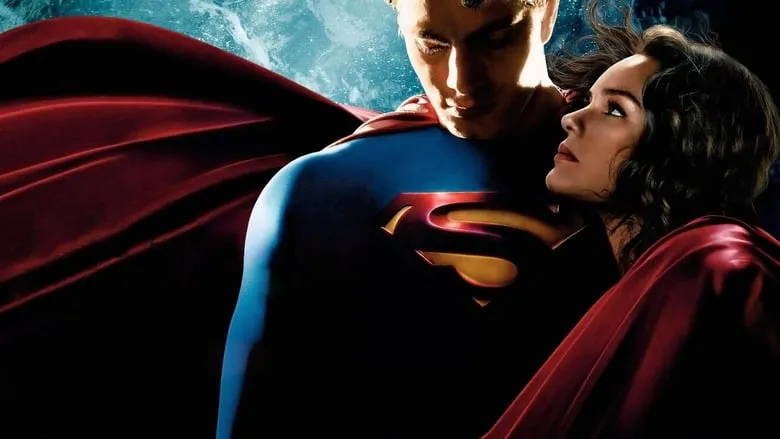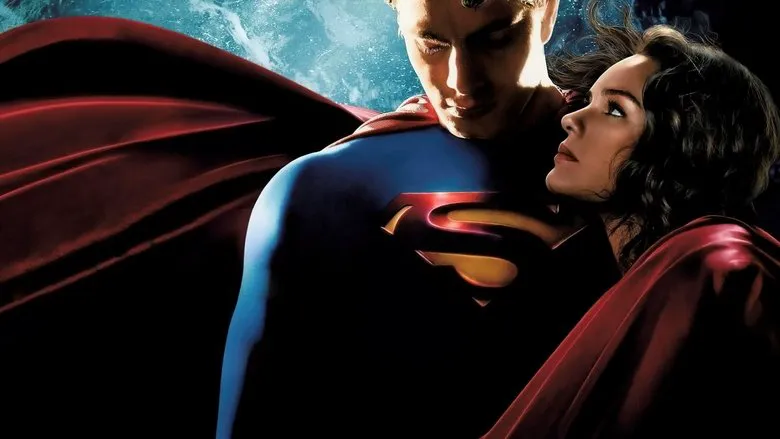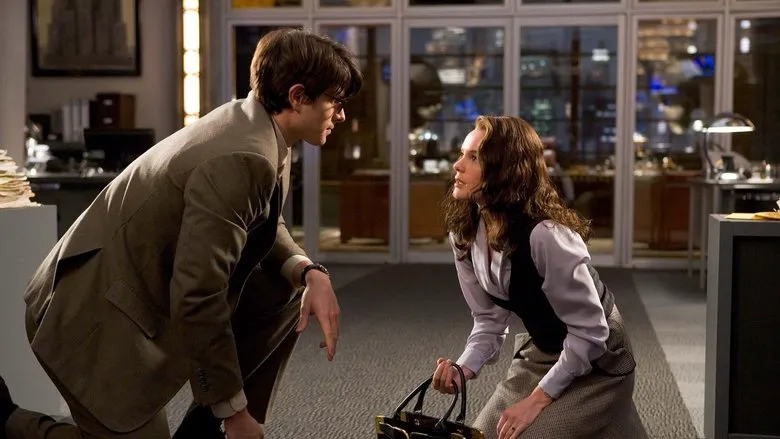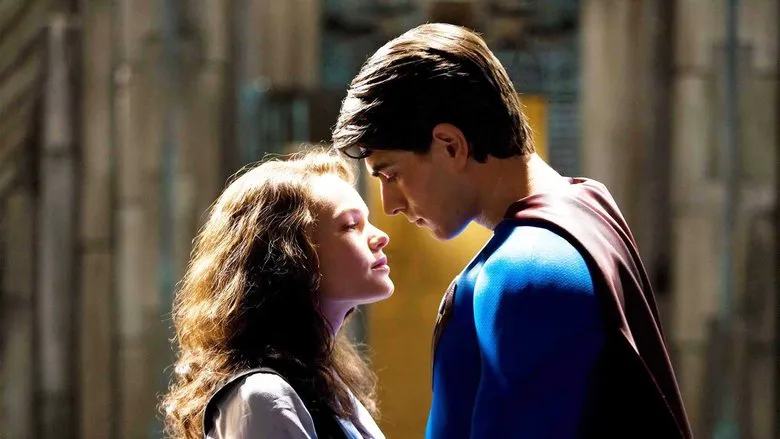A Superman Epic: Style, Ambition, and a Retro Suit
“Superman Returns” (2006) is nothing short of an epic. From the opening credits, the film announces its cosmogonic ambitions. The $260 million budget is evident in every action sequence, and Brian Singer’s impeccable sense of style permeates every frame. Ultimately, the film’s style, ambition, and financial backing overshadow the fact that this remake spent six years in development, cycled through three directors, and considered dozens of actors for the lead role. While some may question the film’s purpose, “Superman Returns” manages to hold together, avoiding boredom and the vulgarity often associated with the genre.

Ironically, the only truly jarring element is the classic Superman costume, reminiscent of 1930s comic book fashion. While its inclusion is understandable, the costume raises questions about the film’s connection to the source material. Unlike the timeless “Batman Begins” (2005), which seamlessly integrated its comic book origins, “Superman Returns” struggles to justify its retro aesthetic in a modern setting. Singer attempts a smooth transition, but the presence of a man in tights and a cape undermines the film’s grand ambitions with its lighthearted, retro superpowers. Why is he engaging in circus-like feats instead of utilizing zero-point transportation? It feels absurd. If Superman were conceived today, he would be fundamentally different, from his origins on Krypton to his motivations for leading a double life. The plot feels contemporary, and a more modern, “Terminator”-esque Superman could have enhanced the narrative’s impact and allowed for a more serious interpretation of the comic book mythology. Singer’s efforts to blend the real and comic book worlds are evident, but the constraints of the 1930s traditions limit his creative freedom. “Superman Returns” ultimately lacks emotional depth.

The Cast: A Trio of Strengths
However, this criticism does not extend to Brandon Routh’s performance. He is one of the three pillars upon which Singer built his project, and his casting was clearly a well-considered decision. Routh’s resemblance to the late Christopher Reeve is uncanny, bordering on the mystical, with only a slight difference in their eyes. Throughout the film, one can’t help but marvel at the power of cinema to resurrect the deceased. Routh’s physical attributes compensate for his somewhat average acting abilities. He is complemented by Kevin Spacey’s masterful portrayal of Lex Luthor, the second pillar of the film. Spacey brings a naturalness, humor, and calmness to the role, even when plotting super-villainous schemes in a bathrobe. He feels relatable, almost like a regular guy. Spacey arguably surpasses Gene Hackman’s portrayal in Donner’s film, contributing significantly to the comic’s modern appeal. The third pillar is the interplay between Lex’s and Superman’s storylines, each with its own narrative development, stylistic choices, and set of attractions. This alternating structure prevents the action from becoming repetitive, as seen in “Mission: Impossible III” (2006), and keeps the audience engaged.

Action and Spectacle
Singer wisely dispenses with the Krypton backstory in a single title card. He does indulge in a brief flashback to young Clark Kent’s transformation into Superman, complete with a scene of his first flight through a wheat field. The film then unfolds in a series of distinct “objects” or set pieces. Superman returns to Earth, Lex Luthor is released from prison, and the narrative gradually builds towards their confrontation, showcasing the power of cinema through a series of impressive sequences:
- Lex Luthor discovers an ice-crystal palace in the Arctic, revealing a digital image of Marlon Brando (Superman’s deceased father from Donner’s film).
- Superman saves Lois Lane (Kate Bosworth) and an entire airliner from a failed space shuttle detachment (the climax of this sequence at the stadium is particularly memorable).
- Lex Luthor experiments with stolen crystals on a miniature model of suburban America (the destruction is achieved using practical effects with metal figurines).
- Superman rescues people from explosions and disasters around the world, including Luthor’s girlfriend (Parker Posey), who is the object of Lois Lane’s jealousy. Lois is now living with another man and has a child (it’s clear from the beginning that the child is Superman’s, and it’s only a matter of time before he displays his superpowers).
- Lex Luthor demonstrates his plans for America.
- Superman deflects a bullet with his eye during a bank robbery.
- Lex Luthor begins transforming the Earth.
- Superman saves the Lane family from a sinking yacht.
- Lex Luthor builds Atlantis.
- Superman is stabbed with a kryptonite spear while trying to stop him.

This is not an exhaustive list, but describing the grand finale with all its intricacies would be a disservice. The climax is almost operatic in its scope, encompassing elements from Atlantis to Krypton to Metropolis, ultimately bringing the film together. Each scene is filled with smaller, well-integrated moments, so the above summary is not a spoiler. Singer’s use of aerial, aquatic, and tectonic disasters is not self-indulgent, as in some other films, but rather serves the narrative and the characters. He understands the importance of details, such as the shoes Kate Bosworth must remove before standing on Superman’s feet as he levitates. While the sentimentality between Lois and Superman may be excessive, it is a product of the 1930s source material. The resolution is generally sound, and the computer-generated effects are well-integrated despite their abundance. One can even overlook the ambiguity of Luthor’s motives for destroying America, perhaps reasoning that “no one would buy land in Atlantis if there were plenty of prairies.”

The lack of humor is not justified by the film’s cosmic scope, which may explain why “Pirates of the Caribbean” outperformed “Superman Returns” in the American box office despite a smaller budget. Interestingly, neither “X-Men: The Last Stand” (2006) nor “Superman Returns” suffered significantly from the change in directors from Brian Singer to Brett Ratner. In Hollywood, craftsmanship is the ultimate achievement.